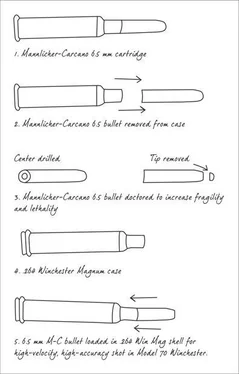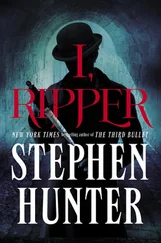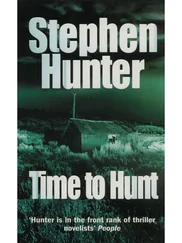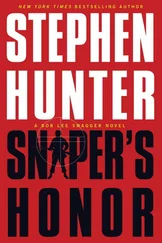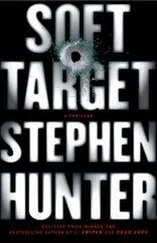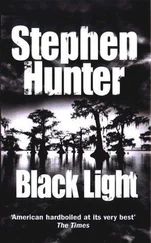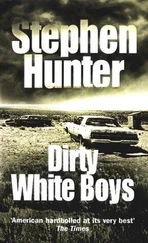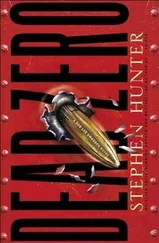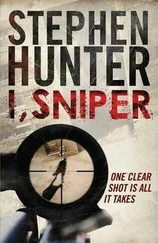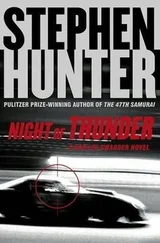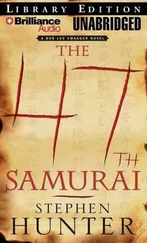Stephen Hunter - The Third Bullet
Здесь есть возможность читать онлайн «Stephen Hunter - The Third Bullet» весь текст электронной книги совершенно бесплатно (целиком полную версию без сокращений). В некоторых случаях можно слушать аудио, скачать через торрент в формате fb2 и присутствует краткое содержание. Жанр: Триллер, на английском языке. Описание произведения, (предисловие) а так же отзывы посетителей доступны на портале библиотеки ЛибКат.
- Название:The Third Bullet
- Автор:
- Жанр:
- Год:неизвестен
- ISBN:нет данных
- Рейтинг книги:5 / 5. Голосов: 1
-
Избранное:Добавить в избранное
- Отзывы:
-
Ваша оценка:
- 100
- 1
- 2
- 3
- 4
- 5
The Third Bullet: краткое содержание, описание и аннотация
Предлагаем к чтению аннотацию, описание, краткое содержание или предисловие (зависит от того, что написал сам автор книги «The Third Bullet»). Если вы не нашли необходимую информацию о книге — напишите в комментариях, мы постараемся отыскать её.
The Third Bullet — читать онлайн бесплатно полную книгу (весь текст) целиком
Ниже представлен текст книги, разбитый по страницам. Система сохранения места последней прочитанной страницы, позволяет с удобством читать онлайн бесплатно книгу «The Third Bullet», без необходимости каждый раз заново искать на чём Вы остановились. Поставьте закладку, и сможете в любой момент перейти на страницу, на которой закончили чтение.
Интервал:
Закладка:
Swagger thought: Hmm, that’s kind of interesting. The shot had to come from behind.
CHAPTER 5
Shower, dress, coffee, paper. The same khaki suit, still baggy. The same red tie. He noticed neither tie nor suit and headed out. Dal-Tex was eight blocks or so away, the same walk as last night’s jaunt to Dealey, and he thought it would do his hip some good to walk it.
He made them easily enough. Two of them. One on foot, one trailing in a car, which looked to be an ’09 Chevy. The car hopscotched, and the man on foot would change duties with the driver. One guy was black, in a black suit with no necktie, a porkpie hat, and shades. The other was dour and plump, in plaid sport coat and slacks, no tie, no hat, no glasses, sun or otherwise. They were not amateurs.
Bob walked down Main, swallowed by the glass-and-steel canyons that had not been there fifty years ago. As last night, he followed Kennedy’s route, pungently aware that the style of modern air-conditioning climate control largely banished the open window from large building construction. No open windows in the sheets of tinted glass that rose forty stories.
It was all different for Kennedy. The buildings then were squatter, stouter things, constructed mostly in the twenties and thirties, lots of ornamentation and showy work, arches and cupolas and the other flourishes that cheap skilled labor could routinely produce in brick or stone. And windows. The close-in canyons of Main must have pushed JFK past fifty thousand open windows, and a shooter could have lurked in any of them. It was outside the limits then. Kennedy himself joked about it and drew smiles because it was such a fantastic possibility. He was just about out of windows too; beyond the depository, it was wide-open space all the way to the Trade Mart and the speech he never gave. The fifty-thousand-and-first window had a gunman behind it. End of story.
As had Kennedy, Swagger reached Main’s jog at Dealey, and instead of turning left to follow Main, he turned right down Houston. A block brought him to the corner where he’d met Nick, where Houston crossed Elm and the two brick piles stood side by side, the Book Depository and Dal-Tex, almost twins: square girder and mortar palaces.
He looked hard at Dal-Tex. A biggish office building, seven stories tall, redbrick, flat roof, fairly elaborate with arches built into the brick, recessing the windows, thick stone slabs edging the roof, big windows that opened from the bottom up. He could see where new oranger brick had replaced a couple of chunks at the joinery of the Elm-Main corner, to sustain a new brand for the unit. That corner also sported the building’s sole retail unit, the Sixth-Floor Museum souvenir shop and coffee gallery, though it was unclear if it was officially connected with the museum in TBD across the street, or if they had claimed the name as a marketing ploy. He noted that a fire escape, which in 1963 ran the height of the building on Houston Street, was gone.
Swagger’s vision drifted leftward, across the gulf of Houston Street, and settled again on LHO’s sniper’s nest, at the sixth-floor corner window. From where Swagger stood at the corner of the two streets, the window seemed immense. It couldn’t have been seventy-five feet away, and the downward angle wouldn’t affect the trajectory because the range was so close. You point at the white shirt through that junky scope and pull the trigger and cannot miss; no bad trigger pull could jerk the gun far enough to make a difference, no wind deflection could push the bullet from its destiny, nothing could interfere with its flight into flesh.
He stood on the corner, again imagining the slow pivot of the big car as the driver wheeled it through the 120 degrees of the turn. It would have been all but stationary except for the slow pivot. And up there, behind Window 50,001, was the gunman.
Again: why didn’t he shoot then? Wide-open target, straight angle into the high chest, Connally too far forward to interfere, Jackie to the right and out of the way, the shot so easy. A Boy Scout could have made it.
What was going on with LHO up there in his nest?
Another mystery, unknowable, unsolvable, that had died with Jack Ruby’s .38 Special into Lee Harvey.
Swagger waited for the light to change, crossed the street, turned right and then left up the four steps, and entered Dal-Tex.
The first thing he felt was the openness. Looking up, he saw space, as an atrium scooped from the guts of the building exposed several floors of balconies and the wood trusses of the roof. Moving ahead to the security kiosk, he was greeted by a man in his forties, well dressed and pleasant.
“Mr. Arons? My name is Jack Brophy. I think my friend Richard Monk called you on my behalf.”
They shook hands and Arons said, “Yes, he did, Dr. Brophy–”
“Jack, please.”
“Jack, then. He did, and I like Richard, so I’ll be happy to take you through and try to answer any of your questions.”
Swagger peppered the man with inquiries. The first concerned the atrium, which, no, wasn’t there in ’63. It was the creation of a nineties refurb. The whole building, Swagger saw, had the kind of urban-hip tone of so many gentrified older units, and the new designer had stressed raw brick where possible, lots of plain white structural wood, simplicity and unforced elegance everywhere. The ceilings had been cleverly peeled of stucco, exposing the stout girders that were the frame of the building nested in the still-sound wood beams that also sustained the building’s pressures.
“I’m guessing these three elevators were here before?” he asked as they rode up.
“Since the beginning,” said Arons. “They’ve been rehabbed, of course” – the elevator was sleek stainless and teak, with mirrors for the vain – “but the shaft was always here, central rear.”
“Got it. Were there ever any elevator operators? Particularly in 1963?”
“Not then, not ever.”
“What about security?”
“Never. Not until recently, that is.”
Swagger felt that the building was smaller on the inside than on the outside, even with the opened atriums and ceilings. Also, it was squarer; somehow you sensed the perfection of its symmetries inside, whereas from outside, it seemed longer one way, more rectangular.
They started on the seventh floor, and Arons took him to an unrented office suite that fronted on Houston Street, looking south to the Book Depository. Its roof could be seen twenty-five feet away, but more evident was the angle down Elm, exposing totally the street up to and beyond the X that marked the brain shot.
It didn’t take a genius to see how easy that shot, or the back shot that preceded it, would have been from here. Moreover, the wide sill made for superb, almost bench-quality stability, and since the window was recessed in an encompassing arch, the muzzle wouldn’t have been visible from the street nor, given the height, from the TBD across Houston, the only building on the horizon. The angle into the car and bodies would have been almost identical to Oswald’s, depending on the subtleties of twist and turn of the president and the governor.
“And the windows? They’ve always been the kind that slid up and down, like these, not the kind that hinged outward?”
“Always up and down.”
“And the floors? All wood, like now? Ever covered with carpet?”
“Just as you see it, except in those days, plasterboard covered the brick. Then as now, it was used for office space and storage. It was a much busier building, with a lot of garment wholesalers. They used it as a distribution center, so it was in one sense more a warehouse, particularly on the lower floors. The office suites were on the upper four floors.”
Читать дальшеИнтервал:
Закладка:
Похожие книги на «The Third Bullet»
Представляем Вашему вниманию похожие книги на «The Third Bullet» списком для выбора. Мы отобрали схожую по названию и смыслу литературу в надежде предоставить читателям больше вариантов отыскать новые, интересные, ещё непрочитанные произведения.
Обсуждение, отзывы о книге «The Third Bullet» и просто собственные мнения читателей. Оставьте ваши комментарии, напишите, что Вы думаете о произведении, его смысле или главных героях. Укажите что конкретно понравилось, а что нет, и почему Вы так считаете.
